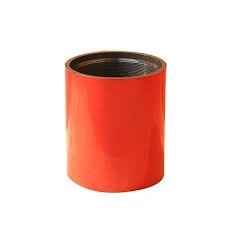- Afrikaans
- Albanian
- Amharic
- Arabic
- Armenian
- Azerbaijani
- Basque
- Belarusian
- Bengali
- Bosnian
- Bulgarian
- Catalan
- Cebuano
- Corsican
- Croatian
- Czech
- Danish
- Dutch
- English
- Esperanto
- Estonian
- Finnish
- French
- Frisian
- Galician
- Georgian
- German
- Greek
- Gujarati
- Haitian Creole
- hausa
- hawaiian
- Hebrew
- Hindi
- Miao
- Hungarian
- Icelandic
- igbo
- Indonesian
- irish
- Italian
- Japanese
- Javanese
- Kannada
- kazakh
- Khmer
- Rwandese
- Korean
- Kurdish
- Kyrgyz
- Lao
- Latin
- Latvian
- Lithuanian
- Luxembourgish
- Macedonian
- Malgashi
- Malay
- Malayalam
- Maltese
- Maori
- Marathi
- Mongolian
- Myanmar
- Nepali
- Norwegian
- Norwegian
- Occitan
- Pashto
- Persian
- Polish
- Portuguese
- Punjabi
- Romanian
- Russian
- Samoan
- Scottish Gaelic
- Serbian
- Sesotho
- Shona
- Sindhi
- Sinhala
- Slovak
- Slovenian
- Somali
- Spanish
- Sundanese
- Swahili
- Swedish
- Tagalog
- Tajik
- Tamil
- Tatar
- Telugu
- Thai
- Turkish
- Turkmen
- Ukrainian
- Urdu
- Uighur
- Uzbek
- Vietnamese
- Welsh
- Bantu
- Yiddish
- Yoruba
- Zulu
Durable Stainless Steel Hose Connectors for Reliable Fluid Transfer Solutions
Stainless Steel Hose Couplings Essential Components for Fluid Transfer
Stainless steel hose couplings are critical components in a variety of industries, facilitating secure and efficient connections in fluid transfer systems. Whether used in chemical processing, food and beverage, pharmaceuticals, or general manufacturing, these fittings play a vital role in ensuring safety, reliability, and performance.
Advantages of Stainless Steel Couplings
The choice of material is crucial when it comes to hose couplings. Stainless steel offers several advantages compared to other materials like brass or plastic. Firstly, stainless steel is highly resistant to corrosion, making it ideal for applications involving harsh chemicals or extreme environmental conditions. This resistance ensures longevity and reduces the risk of contamination, which is particularly important in industries such as food processing and pharmaceuticals.
Additionally, stainless steel couplings can withstand higher temperatures and pressures than many alternatives. This characteristic makes them suitable for high-demand applications where flexibility and durability are required. Their robust construction minimizes the chances of failure, thereby protecting both the system and personnel involved.
Types of Stainless Steel Hose Couplings
There are various types of stainless steel hose couplings designed for specific applications. Some of the most common types include
1. Socket Weld Couplings These are designed for applications that require a permanent connection. They are welded directly to the hose, creating a strong and leak-proof seal.
stainless steel hose couplings

3. Quick Connect/Disconnect Couplings These are designed for convenience and efficiency, allowing users to quickly connect or disconnect hoses without the use of tools. This feature is particularly useful in applications where frequent changes are needed.
4. Camlock Couplings Known for their ease of use, camlock couplings feature a quick-release mechanism, making them an excellent choice for rapid fluid transfer in various applications.
Installation and Maintenance
Correct installation is crucial for the performance of stainless steel hose couplings. It's essential to follow manufacturer guidelines to ensure that couplings fit properly and create a secure seal. This may involve using the appropriate torque specifications for threaded couplings or following specific procedures for welding socket weld couplings.
Maintenance of stainless steel couplings typically includes regular inspections for signs of wear, corrosion, or damage. Although stainless steel is resistant to rust, it can still undergo pitting corrosion if subjected to certain chemicals or contaminated environments. Cleaning the couplings regularly and ensuring that they are free from any buildup of substances can prolong their lifespan.
Conclusion
In summary, stainless steel hose couplings are indispensable in ensuring the safe and efficient transfer of fluids across various industries. With their corrosion resistance, ability to withstand extreme conditions, and various types designed for specific applications, they provide reliability and performance that other materials may not offer. Regular maintenance and proper installation are essential to maximize their lifespan and serviceability. As industries continue to evolve and demand high standards of safety and efficiency, stainless steel hose couplings will undoubtedly remain a key component in fluid transfer systems worldwide.
-
Tubing Pup Joints: Essential Components for Oil and Gas OperationsNewsJul.10,2025
-
Pup Joints: Essential Components for Reliable Drilling OperationsNewsJul.10,2025
-
Pipe Couplings: Connecting Your World EfficientlyNewsJul.10,2025
-
Mastering Oilfield Operations with Quality Tubing and CasingNewsJul.10,2025
-
High-Quality Casing Couplings for Every NeedNewsJul.10,2025
-
Boost Your Drilling Efficiency with Premium Crossover Tools & Seating NipplesNewsJul.10,2025







